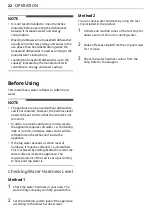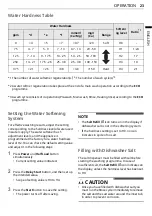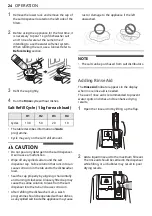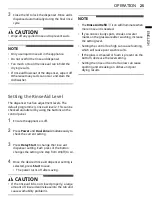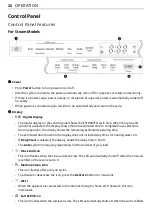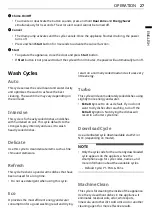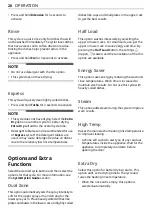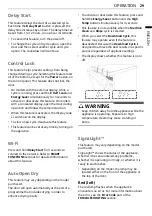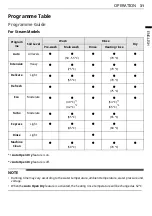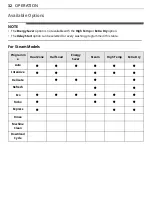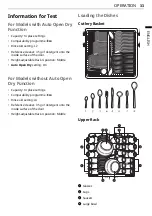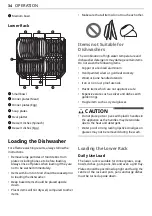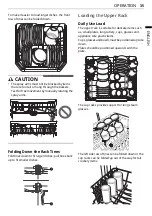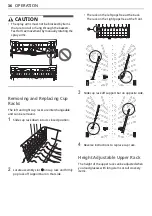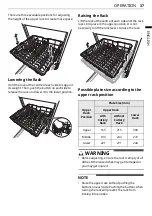
22
OPERATION
NOTE
• It is not recommended to rinse the dishes
manually before operating the dishwasher
because it increases water and energy
consumption.
• Washing tableware in a household dishwasher
usually consumes less energy and water in the
use phase than hand dishwashing when the
household dishwasher is used according to the
manufacturer’s instructions.
• Loading the household dishwasher up to the
capacity indicated by the manufacturer will
contribute to energy and water savings.
Before Using
This model has a water softener to soften hard
water.
NOTE
• The appliance can be used without dishwasher
salt if not required, however, the hardness level
needs to be set to H0 so that the icon does not
remain lit.
• In order to provide satisfactory rinsing results,
the appliance requires soft water, i.e., containing
little or no lime, otherwise water stains will be
left behind on the dishes and inside the
appliance.
• If the tap water exceeds a certain level of
hardness, it must be softened, i.e., decalcified.
This is achieved by adding dishwasher salt to the
water softener inside the appliance. The
required amount of the salt is set up according
to how hard tap water is.
Checking Water Hardness Level
Method 1
1
Check the water hardness in your area. The
water utility company can help you with this.
2
Set the softening system level of the appliance
according to the water hardness level.
Method 2
You can check water hardness by using the test
strip included in the product.
1
Immerse all reaction zones of the test strip for
about a second. Do not in running water.
2
Shake off excess liquid from the strip and wait
for 1 minute.
3
Check the water hardness colour from the
strip. Refer to the wrapper.















